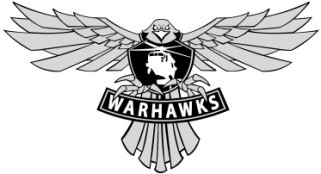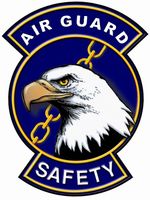Information
-
Document No.
-
Audit Title
-
Client / Site
-
Conducted on
-
Prepared by
-
Location
-
Personnel
Program Management Areas
-
Is there a current USR appointment letter signed by the Unit CC? <br>REF AFI91-202 AFGM 2015-01 para 1.8.21.2
-
Has the newly appointed USR (s) received training within 30 working days after appointment?<br>REF AFI 91-202 para 2.2.
-
Are Safety meetings being accomplished between the commander and USR(s) at least quarterly?<br>REF AFI 91-202 para 2.2.2.1 & 8.5.1
-
Has the USR conducted and documented spot inspections; at a minimum, one spot inspection will be performed by the USR per month and sent to the Occupational Safety Manager. Spot Inspections will be conducted IAW AFI 91-202, para. 2.2.2.2., 3.7, and 8.5.5 (USRs). Documentation of spot inspections can be accomplished on the locally developed USR Spot Inspection Form. Spot inspection documentation will contain at least the minimum requirements as outlined in AFI 91-202, para. 3.7.3.
-
Does the USR ensure mishap notification procedures are established in the unit and unit personnel are aware of mishap reporting requirements?<br>REF AFI 91-202 para 2.2.2.3. & 8.5.3.
-
Does the USR assist installation safety, unit commander and supervisors with mishap investigations when required?<br>REF AFI 91-202 para 8.5.3.
-
Does the USR verify that the supervisors are conducting monthly spot inspections of work areas and are documented?<br>REF AFI 91-202 para 1.4.3.1.3.
-
Does the USR assist supervisors who develop JST Guides?<br>REF AFI 91-202 para 2.2.2.4 & Attachment 4
-
Does the USR conduct safety briefings and provide unit personnel with educational safety materials. AFSC/MAJCOM/Wing Safety websites should be accessed to get briefing topics/material e.g., Quest for Zero).<br>REF AFI 91-202 para 2.2.2.5.
-
Does the USR disseminate safety educational materials and verify unit safety briefings are being conducted?<br>REF AFI 91-202 para 8.5.4
-
Has the commander established safety policies and goals and are all individuals aware of them.<br>REF AFI 91-202 para 1.4.1.3
-
Has a process been established to review requests for equipment, products and services using purchase orders and/or Government Purchase Cards for potential safety and health impact.<br>REF AFI 91-202 para 1.8.21.7
-
Is the Risk Management process being utilized to the maximum extent possible to identify and assess hazards?<br>REF AFI 91-202 para 1.4.2
-
Are control measures being implemented to mitigate hazards discovered during the Risk Management process?<br>REF AFI 91-202 para 1.4.2
-
Does the USR assist the unit commander, supervisors and unit personnel with the hazard abatement process?<br>REF AFI 91-202 para 2.2.2.6 & 8.5.2
-
Does the USR facilitate the inspection process for their unit?<br>REF AFI 91-202 para 2.2.2.7
-
Does the USR maintain a Unit Safety Representative Continuity Book? (Hard copy or electronic)
Safety Education & Training
-
Is the commander, USR, shop supervisor consistently sending members to Supervisor Safety Training (SST)?<br>REF AFI 91-202 para 2.3.2 & 2.3.2.1
-
Have USRs completed and provided the132 WG/SEG a copy of any Air Force level RM course? This training can be accomplished via the Air Force Distributed Learning Service (ADLS) site: https://golearn.csd.disa.mil/kc/login/login.asp under the “Miscellaneous” course category. Training certificate will be maintained by the USR.<br>REF AFI 90-802 para 10, 11.3 & 12
-
Does the unit currently maintain AF Form 55s or suitable alternative IAW AFI 91-202_AFGM2015-01, para 1.8.22.5.1.
Motorcycle Program
-
Has the unit established a motorcycle safety program IAW AFI 91-207_AFGM2015-02, paragraph 1.3.3.14 and local requirements?
-
Does the unit have a Motorcycle Mentorship Program?<br>REF AFI 91-207 para 1.3.3.8 & 3.5.5
-
Has the unit commander appointed in writing a unit MSR/Alternate MSR?<br>REF AFI 91-207_AFGM2015-02 para 1.3.3.14 & AFI 91-202 para 8.6
-
Has the unit commander appointed in writing a unit MSR/Alternate MSR?<br>REF AFI 91-207_AFGM2015-02 para 1.3.3.14 & AFI 91-202 para 8.6
-
Has the Commander ensured that procedures to have personnel in and out-process through MSR for identification and documentation of riders in AFSAS/MUSTT module been established?<br>REF AFI 91-207_AFGM2015-02 para 1.3.4.4
-
Does the unit currently utilize MUSTT to track and account for all motorcycle riders?<br>REF AFI 91-207_AFGM2015-02 para 1.3.9.1
-
Does the unit commander or MSR conduct periodic meetings with riders?<br>REF AFI 91-207 para 3.5.5.1
-
Does the unit commander or MSR review recent mishaps and causes with riders?<br>REF AFI 91-207 para 3.5.5.2
-
Does the unit commander or MSR advocate personal risk management and decision making to riders?<br>REF AFI 91-207 para 3.5.5.3
-
Does the unit commander or MSR emphasize formal and informal training opportunities to riders?<br>REF AFI 91-207 para 3.5.5.4
-
Does the unit commander or MSR highlight impact of seasonal conditions on safe riding?<br>REF AFI 91-207_AFGM2015-02 para 1.3.4.6 & 3.5.5.5
-
Has the unit commander or MSR ensured riders are aware of the benefits and opportunities of mentorship organizations?<br>REF AFI 91-207 para 3.5.5
-
Has the unit commander or MSR promoted esprit de corps amongst motorcycle riders?<br>REF AFI 91-207 para 1.3.3.8 & 3.5.5.6
-
Has the USR and the MSR evaluated the unit motorcycle safety program to ensure compliance with AFI 91-207?<br>REF AFI 91-207 para 1.1.1
Safety Bulletin Board
-
Has the following been posted on the safety board?
-
Does the Unit have “Mishap Notification Procedures”?<br>REF AFI 91-202 para 2.2.2.3
-
AFVA 91-209. Reference, AFI 91-202, paragraphs 8.5.7
-
USAF Hazard report (AF Form 457). Reference AFI 91-202, paragraphs 4.1 & 4.3.
-
“What a Federal Employee Should Do When Injured at Work” (CA-10). IAW The Federal Employees' Compensation Act, as amended and extended (5 U.S.C. 8101, et seq.) (FECA) is administered by the Office of Workers' Compensation Programs of the U.S. Department of Labor
-
Does the Safety Bulletin Board contain both Wing and Unit Commander’s Safety Policy.
-
Seasonal Safety flyers/Pamphlets/Posters, etc.
-
Emergency Telephone Numbers posted for Safety, Fire & BIO.
Miscellaneous
-
Are mishap notifications sent to Occupational Safety Manager on time?<br>REF AFI 91-204 para 1.3.3
-
Is the unit submitting an AF Form 978, Ground Mishap Report, signed by the commander, to Wing Safety within 5 work days for all on-duty and off-duty mishaps?<br>REF AFI 91-204 para 1.3.3.1
-
Are interim control measures in place to effectively mitigate or eliminate identified hazards until they can be fixed to protect personnel or property?<br>REF AFI 91-202 para 4.3.1
-
Has A HAZCOM program been established in required areas IAW AFI 90-821 para 2.6.2.& 3.1
-
Are Safety Data Sheets (SDSs) available to all personnel?<br>REF AFI 90-821 para 3.1.4 - 3.1.4.2.4
-
Do supervisors ensure PPE is provided, used and maintained in a sanitary, serviceable condition?<br>REF AFI 91-203 para 14.3.2 (if required)
-
Are AFIs and other safety regulations accessible to the USR?
-
Safety Complaints and Grievances: Were safety complaints or grievances received during this inspection.<br>REF AFI 91-202 para 3.6.2.1
-
Has the unit reported any hazards on AF Form 457 within the past year?<br>REF AFI 91-202 para 4.3
Lock-Out/Tag-Out Program
-
Lock-Out/Tag-Out Program
- Complies
- Does not Comply
- Complies w/comments
-
Comments
-
Are procedures developed and documented for safe and proper use of locks and tags?<br>REF AFI 91-203 para 21.2.1.4
-
Has the Supervisor generated and maintained equipment-specific written LOTO procedures, i.e., a LOTO continuity book.<br>REF AFI 91-203 para 21.3.5.1
-
Has a LOTO training plan been developed for initial and recurring training on lockout and tagout procedures? Is recurring training being performed on an annual basis?<br>REF AFI 91-203 para 21.2.1.6 & 21.5.3
-
Are specific, written procedures utilized during shift or personnel changes to ensure the continuity of lockout or tagout protection?<br>REF AFI 91-203 para 21.4.10
-
Is an inspection of the lockout and tag-out program conducted by an authorized worker or supervisor annually, to ensure compliance with all program elements? Self-assessments shall be designed to correct any deviations or inadequacies observed.<br>REF AFI 91-203_AFGM2015-04 para 21.2.1.10. Also, refer to paragraphs 21.6.1 and 21.6.2
-
Do functional managers and commanders ensure annual inspections of LOTO procedures within their organization are conducted by an individual above the shop level supervisor to verify and document effectiveness of the energy control procedures?<br>REF AFI 91-203 para 21.6.2
-
Can all workers recognize when LOTO is being used, the general reasons for LOTO and the importance of not tampering with or removing LOTO devices?<br>REF AFI 91-203 para 21.3.4.1
-
Have equipment-specific, written procedures been developed for use when equipment or machinery undergoes servicing, modification or maintenance?<br>REF AFI 91-203 para 21.3.8. *** Refer to AFI 91-203 para 21.3.1 for exceptions
-
Are affected personnel directly affected by the operation or shutdown of the equipment or machine notified of LOTO device? Notification shall be given before controls are applied and after they are removed.<br>REF AFI 91-203_AFGM2015-04 para 21.4
-
Is initial and recurring lockout and tagout program job training current and documented?<br>REF AFI 91-203 para 21.5.5
Confined Space Program
-
Has the commander and/or functional manager developed and implemented a written confined space program?<br>REF AFI 91-203 para 23.2.7.1
-
Does the commander and/or functional manager ensure personnel who support the permit-required confined space program are properly trained, equipped and qualified.<br>REF AFI 91-203 para 23.2.7.2
-
Is confined space training documented on an AF IMT 55, Employee Safety and Health Record, or an authorized computerized information management system?<br>REF AFI 91-203 para 23.7.5
High Risk Activities (HRA) Program
-
Supervisors or commanders will discuss training, experience, rules, precautions, and the use of safety equipment with personnel planning to participate in HRAs.<br>REF AFI 91-202 Attachment 11, A11.2.
-
Are supervisors using the AF Form 4391, High Risk Activities Worksheet, to document all HRA training.<br>REF AFI 91-202 Attachment 11, A11.5.
MICT Checklist Validation
-
Commander below Installation Level (CC Below Installation)
-
Unit Safety Representative (USR) Responsibilities (USR)
Supervisor Occupational Safety Responsibilities Communicator MICT
-
Has Supervisors reviewed this checklist for actability and documented the result in MICT IAW AFI 91-202 paragraphs 1.8.22.3/1.8.22.8/1.8.22.13/18.22.14 &3.7/AFI 91-203 paragraphs 7.4.6. &7.5.2.7./9.1.2./13.3.1.3 & 13.3.1.3.1./13.4.6.10.3./13.6./14.3.2&14.4.13.2./21.2.1.4. & 21.2.1.6./23.2.11.1. & 23.2.11.3./35.6.3.5.1., 35.6.3.5.2. & 35.6.3.8./35.11.2.2.1. & 35.11.3.1.4./1.8.22.4.
Rick Management Fundamentals
-
Have all AF personnel in your (Flight/Squadron/Group) been trained in AF RM Fundamentals IAW AFI 90-802 Para 4.13 and 4.13.1? This training can be accomplished via the Air Force Distributed Learning Service (ADLS) site: https://golearn.adls.af.mil/kc/rso/login/ADLS_login.asp under the “Miscellaneous” course category for RM Training.
Pre-Departure Safety Briefings - (Recommended management tool for commanders and supervisors.)
-
Are Commanders, managers and supervisors helping guide and mentor employees under the age of 26 in applying personal risk management when planning for a trip.<br>REF AFI 91-202_AFGM2015-01 Attachment 10 A10.2.
-
Are Commanders, managers and supervisors documenting the Pre-Departure Safety Briefings ? AF Form 4392 May be used to document this briefing.<br>REF AFI 91-202_AFGM2015-01 Attachment 10 A10.2.
















